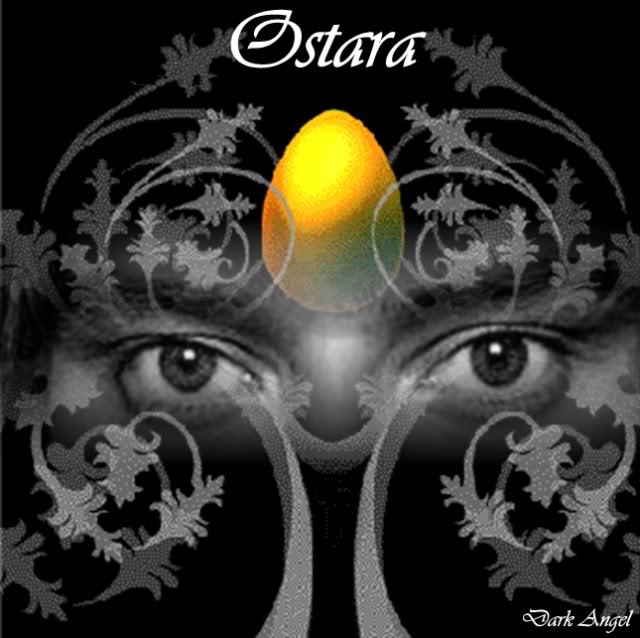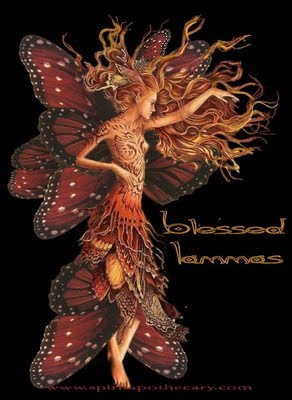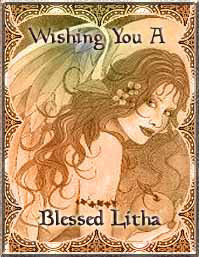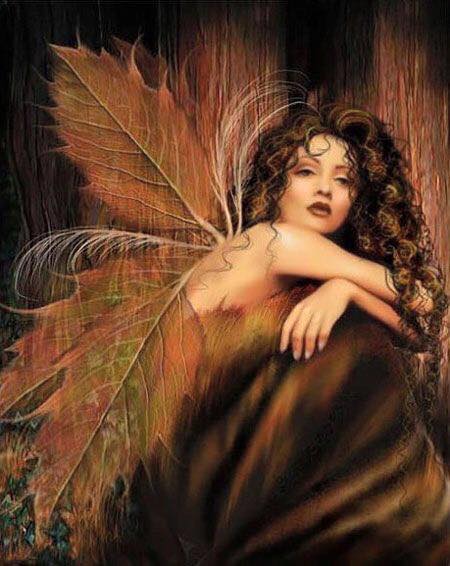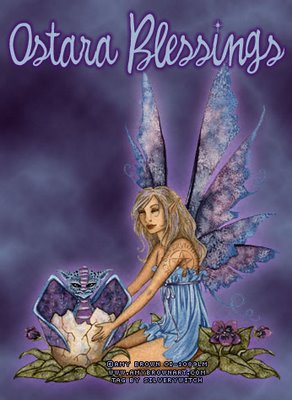To all of us in the Southern Hemisphere, Blessed Samhain, as we head into winter. It is cold and damp up here in the mountains, stay warm and cosy, we have the fire going and are toasty. Blessed Be!
Possibly the biggest festival of the Witches’ year, Samhain is a time to remember those who have passed on, celebrate the Summers end and prepare for Winter months ahead. The Sun God and earth fall into slumber, as the nights lengthen and winter begins.
Samhain, (pronounced SOW-in, SAH-vin, or SAM-hayne) means “End of Summer”, and is the third and final Harvest. The dark winter half of the year commences on this Sabbat.
Various other names for this Greater Sabbat are Third Harvest, Samana, Day of the Dead, Old Hallowmas (Scottish/Celtic), Vigil of Saman, Shadowfest (Strega), and Samhuinn. Also known as All Hallow’s Eve, (that day actually falls on November 7th), and Martinmas (that is celebrated November 11th), Samhain is now generally considered the Witch’s New Year.
It is generally celebrated on April 30th in the Southern Hemisphere. It is one of the two “spirit-nights” each year, the other being Beltane. It is a magical interval when the mundane laws of time and space are temporarily suspended, and the Thin Veil between the worlds is lifted. Communicating with ancestors and departed loved ones is easy at this time, for they journey through this world on their way to the Summerlands.
It is a time to study the Dark Mysteries and honor the Dark Mother and the Dark Father, symbolized by the Crone and her aged Consort. Tradition also teaches that the aid of spirits and guides from the other world was easily enlisted at this time, so in the increasing moonlight of longer nights, many used this time to hone their psychic and divinatory skills, especially with regard to love and marriage.
Originally known as the “Feast of the Dead” this sabbat was celebrated in Celtic countries by leaving food offerings on altars and doorsteps for the “wandering dead”.Today a lot of practitioners still carry out that tradition. Single candles were lit and left in a window to help guide the spirits of ancestors and loved ones home. Extra chairs were set to the table and around the hearth for the unseen guest. Apples were buried along roadsides and paths for spirits who were lost or had no descendants to provide for them. Turnips were hollowed out and carved to look like protective spirits, for this was a night of magic and chaos.
The Wee Folke became very active, pulling pranks on unsuspecting humans. Traveling after dark was was not advised. People dressed in white (like ghosts), wore disguises made of straw, or dressed as the opposite gender in order to fool the Nature spirits.
The Christian religion has adopted this day as All Saints Day, or All Hallows Day, celebrating the eve as All Hallows Eve, or Halloween. The superstition and misconception linked to this celebration by the early church, led people to take some unusual precautions to protect themselves. They adopted the tradition of dressing in frightening costumes or disguises, and displaying scary looking Jack-O-Lanterns to help protect them from spirits they considered to be evil. In the British Isles, the young people would disguise themselves with hideous masks and walk through the village, lighting their way with lanterns made from carved turnips.
This was also the time that the cattle and other livestock were slaughtered for eating in the ensuing winter months. Any crops still in the field on Samhain were considered taboo, and left as offerings to the Nature spirits. Bonfires were built, (originally called bone-fires, for after feasting, the bones were thrown in the fire as offerings for healthy and plentiful livestock in the New Year) and stones were marked with peoples names. Then they were thrown into the fire, to be retrieved in the morning. The condition of the retrieved stone foretold of that person’s fortune in the coming year. Hearth fires were also lit from the village bonfire to ensure unity, and the ashes were spread over the harvested fields to protect and bless the land.
Symbolism of Samhain:
Third Harvest, the Dark Mysteries, Rebirth through Death.
Symbols of Samhain:
Gourds, Apples, Black Cats, Jack-O-Lanterns, Besoms.
Herbs of Samhain:
Mugwort, Allspice, Broom, Catnip, Deadly Nightshade, Mandrake, Oak leaves, Sage and Straw.
Foods of Samhain:
Turnips, Apples, Gourds, Nuts, Mulled Wines, Beef, Pork, Poultry.
Incense of Samhain:
Heliotrope, Mint, Nutmeg.
Colors of Samhain:
Black, Orange, White, Silver, Gold.
Stones of Samhain:
All Black Stones, preferably jet or obsidian.
Traditional Foods:
Apples, Pears, Pomegranates, All Grains, Pumpkin-pie, Hazelnuts, Cakes for the dead, Corn, Cranberry muffins and breads, Ale, Cider, Herbal teas (especially Mugwort) and Meat unless vegetarian and then tofu will do.
Herbs:
Calendula, Cosmos, Chrysanthemum, Wormwood, Hazel, Thistle.
Incense:
Mint, Heliotrope, Nutmeg, Sage or Floral’s.
Woods and Herbs Burned:
Apple, Heliotrope, Mint, Nutmeg, Sage.
Sacred Gemstone:
Aquamarine.
For further information on rites and rituals to celebrate the sabbats, we reccommend:
Pagan Holidays and Earth Magic by Kardia Zoe
However you choose to celebrate Samhain, be adventurous and investigate some of the older traditions. There is a large amount of interesting and sometimes comical lore surrounding this date. As an aside, it’s OK. to dress up as Witches’, Goblins and have fun with the more nonsense aspects of this holiday. It is good however to set aside some time to learn the true meaning behind this date and follow those observances as our ancestors did.
Blessed Be!
Reference: https://wicca.com/celtic/akasha/samhainlore.htm
Beltaine – Northern Hemisphere
To all in the Northern Hemisphere, we wish you and wonderful summer as you celebrate Beltaine. I know some of you are still getting winter weather, I hope this changes for you soon Blessed Be!
Beltane Festival is held in honour of the god Bel.
In some modern traditions he is also known by the names, Beli, Belar, Balor, or Belenus.
In the myth of many modern traditions of wicca/witchcraft, Beltane marks the appearance of the Horned One, who is the rebirth of the Solar God slain during the Wheel of the Year. He then becomes consort to the Goddess, impregnating her with his seed, and thereby ensuring his own rebirth once again.
Beltane marks the beginning of summer’s half and the pastoral growing season. The word “Beltane” literally means “bright fire”, and refers to the bonfires lit during this season.
It is also a time of beginnings, the beginnings of many new projects.
Beltane is a fertility festival, concerned with Nature enchantments and offerings to wildlings and Elementals.
The return of full-blown fertility is now very evident.
The powers of elves and faeries are growing and will reach their height at the Summer Solstice.
The celts respected faeries, active at this sabbat, and were sure that these Little People would come to the celebration disguised as humans to ask for a part of the fire, which, when freely given, would give the faeries some measure of power over the giver.
Beltane is the cross quarter holiday between Spring Equinox and Summer Solstice it is the time when the abundance of flowers and green is a welcome relief from winters drabness; it was traditionally a day for leaping the Beltane fires, which were lit to honour the sun god, and for celebrating fertility.
Beltane celebrates the blessing between Mother Earth and Father Sky and honours all life.
Both are times when the “veil” between the worlds is thought to be thinnest, and therefore magik can happen, such as visits from faeries or similar other-worldly occurrences.
This is a good time for invoking our spirit guides to help us.
A blessed Beltane to you!





